Gay Marine's Amazing Journey From Homeless Shelter to Ivy League
U.S. Marine veteran Elegance Bratton left his New Jersey home at age 16. "If I were to describe my relationship with my family in one word, is silence. Meaningful, heavy silence and the silence revolved around my sexuality," says Bratton.
He says he started having problems in school and wouldn't show up for class. The school called his mother to discuss the troubles Bratton was having. "When she confronted me about it, I ended up letting her know what was wrong and my mother's response was to slap me and say I don't want a [expletive deleted] in this house," he says.
After that Bratton decided to leave the house. "In my household, a slap can turn into an hour-long ordeal of violence. I just panicked. I didn't know what to do and didn't know how to process it. So I grabbed my book bag, wallet and just left," he says.
Bratton's situation is not that uncommon. Every night, more than 1.6 million homeless teens between the ages of 12 and 17 sleep in public areas or shelters in the country. According to a report, LGBT youth make up 40 percent of the homeless youth population.
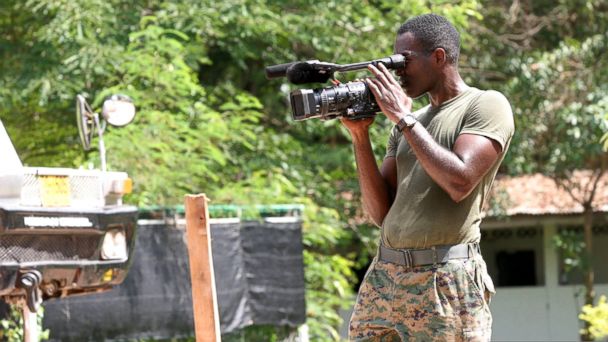
U.S. Marine Elegance Bratton shooting video during Exercise Cobra Gold, Buriram Thailand, 2008. Elegance Bratton .
"I'm from Jersey and my people if you don't have anything to do and be entertained and distracted, you go to New York City," says Bratton. Like many other teens, Bratton headed to New York's West Village. "I was feeling very low at that moment."
While Bratton found a safe place where he could be gay on Christopher Street, the heart of New York City's gay rights movement and the site of the 1969 Stonewall Riots, he was homeless. As a young person …"I wasn't quite in a homeless shelter but wasn't sleeping indoors either," he says.
Bratton spent six years on the streets and in shelters before he called his mother. "Back then I called her and she said, 'sure you can come home.' This time I asked and she said, 'are you still gay?' And I responded 'well, yes I am and she said you should join the military, it will straighten you out.' 'You have to be kidding I told my mom. I can't do that,'" he says.
Bratton spent 10 years in homelessness. Between the ages of 16 to 19 Bratton had access to his home but he didn't feel welcome. "It was too much work for me at that age to be able to say, on this street at this time from sun down to sun up I can be gay and then the rest of my life as long I'm in this woman's house I have to at least maintain the appearance of heterosexuality," he says.
"I didn't have a house. I didn't have food. None of those things were guaranteed to me," he says.
One day Bratton decided that he needed to take huge steps to get out of the homeless shelter. "I looked around and saw all these men who have been dealing with homelessness for decades. There are guys in there who have been there for 10, 20, 30 years and I realized that if I wanted to do something radical and completely different, I had to go against a lot of things that I believed in," he says.
The next morning he got up early around 5:30 when the shelter would put the people out and he made eye contact with a Marine who was standing across the street from him. "He saw me and he walked over to me and asked me if I ever thought about being a Marine before I said to him well, 'If I get to look as good as you look in that uniform, let's do it,'" he says. Bratton join the U.S. Marines in November 2005 and served as a Combat Camera Production Specialist in Camp H. M. Smith in Hawaii shooting videos and taking photography .
"My life remarkably changed for the better. Over time, once you learned what it is to be a marine and what it means to wear this uniform, it became empowering. For me family has always been a real difficult proposition and now that I'm in this uniform I'm instantly a part of this family anywhere I go in the world," says Bratton.
Bratton says that his time during Don't Ask Don't Tell wasn't too different from where he grew up. "Both in the military and in my family home, I had to be very resourceful in creating double lives. Creating a place where I could be gay at, or find places where I can be gay at with the understanding that I couldn't be gay in base or at home," says Bratton. He adds that he had to monitor his behavior while in service. "I was aware about not giving off gay vibes and not doing that was essential to my success."
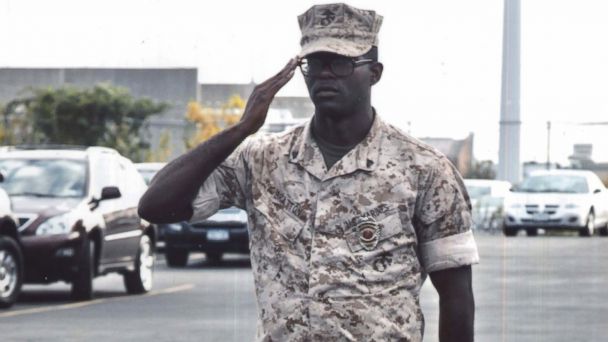
Elegance Bratton at 1st Marine Corps District in Garden City Long Island in 2010. Elegance Bratton
Bratton's last station was in Garden City, N.Y., as an MP. While checking for IDs for people to come in to base, he developed a relationship with a captain at the base. One day that captain forgot his military id and showed him a Columbia University card. "Columbia University is one of those schools that you heard about it, you've seen it in movies but you don't really know people who've gone there. So I said to him, how did you get a Columbia ID?," says Bratton.
The captain ended up showing his transcripts, the paper he was working on and acceptance letter and that's when Bratton said to himself, "If he did that, I could go into Columbia as well."
Columbia University has more than 550 student veterans enrolled across its 17 university colleges and schools. Bratton was able to gain admission to the college's School of General Studies.
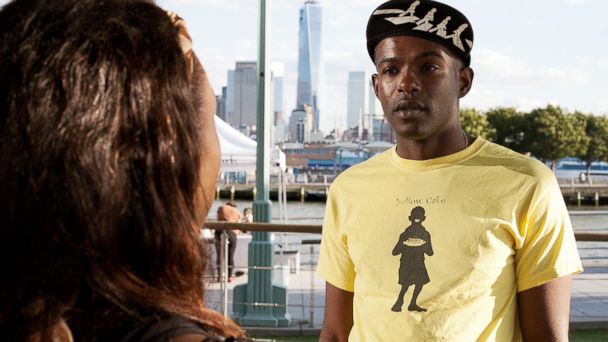
Elegance Bratton interviewing subject for Pier Kids: The Life in New York's West Village. Nathan Proctor
His major in African American Studies and Anthropology, he says, helped him to understand and reexamine the subculture that allowed him to define his identity on his own terms.
Homeless teens in New York City account for 3,800 and LGBT teens account for 1,600. And many also end up in the West Village, Christopher Street and Hudson River Park, also known as "The Pier" just like Bratton did at the time.
Bratton decided to make the film, "Pier Kids: The Life to Shed Light" on black LGBT homeless youth along with Producer Nathan Proctor.
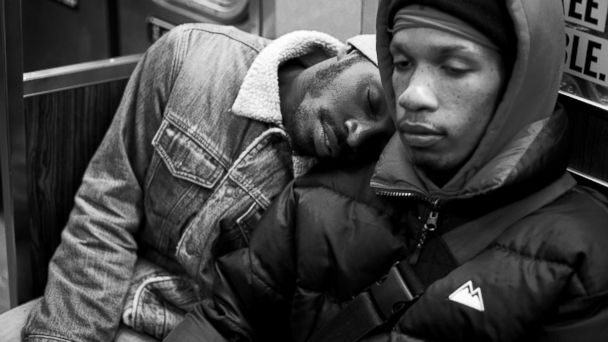
A scene from Pier Kids: The Life.
"Elegance embodies the core values of a liberal education. The documentary is even more powerful because, as a homeless gay youth of color, he experienced what the pier kids, who have been invisible and forgotten for years, still experience today," said School of General Studies Dean Peter J. Awn, professor of Islam. "I know, since I lived in the neighborhood for two decades in the 80's and 90's and, like everyone else, saw them as interlopers who didn't 'fit' into the West Village. This documentary is long overdue."
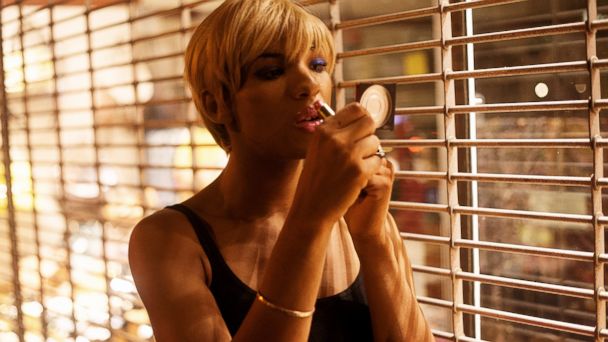
A scene from Pier Kids: The Life.
The film follows the stories of three young people: DeSean, Krystal, and Casper. Together, these three people weave a surprisingly complex story of love, family, exploitation, beauty, and hope according to the film's website.
"The film is born out of my experience living home, being homeless and ending up at Columbia University," says Bratton.
Bratton will graduate this spring and has plans to attend New York University's Graduate Film Program for directing and writing this year.
Second Tour is an ABC News digital series profiling the lives of military veterans who are doing unique things in the civilian world. For more stories, click here.
ABC News video editor Arthur Niemynski contributed to this report.